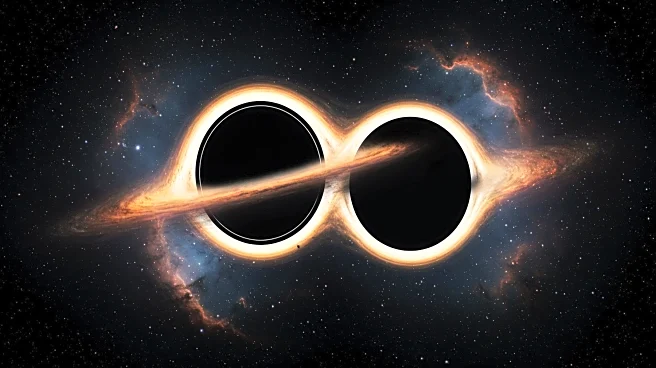What's Happening?
Astronomers have identified a new record holder for the most massive black hole merger, designated GW231123, observed using gravitational waves. The merger, approximately 255 solar masses, challenges current understanding of black hole formation, as it falls within the 'upper-mass gap' where black holes aren't believed to form directly from stellar remnants. The black holes involved are spinning at 80 to 90% of their top speed, making them the highest spinning black holes recorded by the LVK Collaboration. This discovery could upend existing theories and expand our understanding of the cosmos.
Why It's Important?
The discovery of this massive black hole merger provides new insights into the formation and evolution of black holes, challenging existing models of stellar evolution. Understanding these phenomena could lead to revised theories about the lifecycle of stars and the formation of black holes. The research highlights the importance of gravitational wave detection in uncovering hidden cosmic events and expanding our knowledge of the universe. This finding may also influence future studies in astrophysics and cosmology, as scientists seek to understand the implications of such massive mergers.
What's Next?
Further research will focus on understanding the formation and behavior of these massive black holes, potentially leading to new models of black hole evolution. Scientists may conduct additional observations using gravitational wave detectors to study similar phenomena and refine existing theories. These efforts could contribute to a deeper understanding of the universe and the forces shaping cosmic structures.















